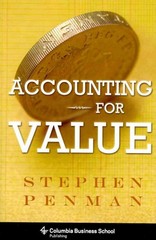Question
On January 1, 2020, ARTI Corporation engaged an independent CPA to perform an audit for the year ended December 31, 2019. The company uses a
On January 1, 2020, ARTI Corporation engaged an independent CPA to perform an audit for the year ended December 31, 2019. The company uses a periodic inventory system. The CPA did not observe the inventory count on December 31, 2019, as a result, a special examination was made of the inventory records.
The financial statements prepared by the company showed the following: ending inventory, P72,000; accounts receivable, P60,000; accounts payable, P30,000; sales, P400,000; net purchases, P160,000, and pretax income P51,000.
The following data were found during the audit:
a. Merchandise received on January 2, 2020, costing P800 was recorded on December 31, 2019. An invoice on hand showed the shipment was made fob supplier's warehouse on December 31, 2019. Because the merchandise was not on hand at December 31, 2019, it was not included in the inventory.
a. Merchandise that cost P18,000 was excluded from the inventory, and the related sale for P23,000 was recorded. The goods had been segregated in the warehouse for pick up by the customer who ordered over the phone.
b. Merchandise that cost P10,000 was out on consignment for Royale Distributing Company and was excluded from the ending inventory. The merchandise was recorded as a sale P25,000 when shipped to Royale on December 29, 2019.
c.A sealed packing case containing a product costing P900 was in ARTI's shipping room when the physical inventory was taken. It was included in the inventory because it was marked "Hold for customer's shipping instructions." Investigation revealed that the customer signed a purchase contract dated December 18, 2019, but that case was shipped and the customer billed on January 10, 2020. A sale for P1,500 was recorded on December 31, 2019.
d. A special item, fabricated to order for a customer, was finished and in the shipping room on December 31, 2019. The customer has inspected it and was satisfied. The customer was billed in full on that sale in the amount of P5,000. The item was included in inventory at cost, P1,000 because it was shipped on January 4, 2020.
e. Merchandise costing P15,600 was received on December 28, 2019. The goods were excluded from inventory, and a purchase was not recorded. The auditor located the related papers in the hands of the purchasing; they indicated, "On consignment from Rebecca Company".
f. Merchandise costing P2,000 was received on January 8, 2020, and the related purchase invoice recorded January 9. The invoice showed the shipment was made on December 29, 2019, fob destination. The merchandise was excluded from the inventory.
g. Merchandise that cost P6,000 was excluded from the ending inventory and not recorded as a sale for P7,500 on December 31, 2019. The goods had been specifically segregated. According to the terms of the contract of sale, ownership will not pass until actual delivery.
h. Merchandise that cost P15,000 was included in the ending inventory. The related purchase has not been recorded. The goods had been shipped by the vendor fob destination, and the invoice was received on December 30, 2019. The goods was received on January 5, 2020.
i. Merchandise in transit that cost P 7,000 was excluded from inventory because it was not on hand. The shipment from the vendor was fob shipping point. The purchase was recorded on December 29, 2019, when the invoice was received.
j. Merchandise in transit that cost P 13,000 was excluded from inventory because it had not arrived. Although the invoice had arrived, the related purchase was not recorded by December 31, 2011. The merchandise shipped fob shipping point by the vendor.
k. Merchandise that cost P 8,000 was included in the ending inventory because it was on hand. The merchandise had been rejected because of incorrect specifications and was being held for return to the vendor. The merchandise was recorded as a purchase on December 26, 2011.
Questions:
Based on your analysis and the information above, answer the following:
1. The adjusted balance of inventory at year-end is:
a. P 101,900 b. P 102,000 c. P 102,800 d. P 120,400
2. The adjusted balance of accounts receivable at year-end is:
a. P 10,500 b. P 12,000 c. P 35,000 d. P 37,000
3. The adjusted balance of accounts payable at year-end is:
a. P 43,000 b. P 35,000 c. P 30,000 d. P 22,000
4. The adjusted balance of Sales at year-end is:
a. P 377,000 b. P 352,000 c. P 350,500 d. P 347,000
5. The adjusted balance of Net Purchases at year-end is:
a. P 152,000 b. P 165,000 c. P 173,000 d. P 181,000
6. The adjusted balance of Pre-tax income at year-end is:
a. P 27,300 b. P 29,000 c. P 29,800 d. P 35,800
Step by Step Solution
There are 3 Steps involved in it
Step: 1

Get Instant Access to Expert-Tailored Solutions
See step-by-step solutions with expert insights and AI powered tools for academic success
Step: 2

Step: 3

Ace Your Homework with AI
Get the answers you need in no time with our AI-driven, step-by-step assistance
Get Started


